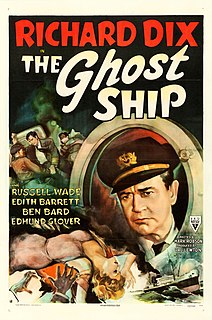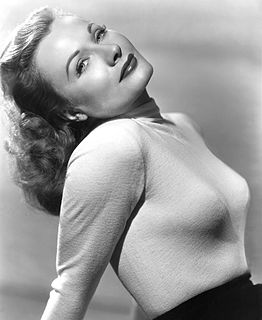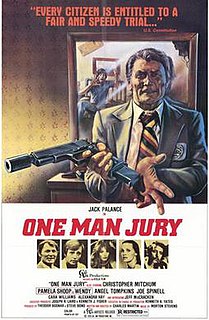
Film noir is a cinematic term used primarily to describe stylish Hollywood crime dramas, particularly those that emphasize cynical attitudes and motivations. The 1940s and 1950s are generally regarded as the "classic period" of American film noir. Film noir of this era is associated with a low-key, black-and-white visual style that has roots in German Expressionist cinematography. Many of the prototypical stories and much of the attitude of classic noir derive from the hardboiled school of crime fiction that emerged in the United States during the Great Depression.
The Whistler is an American radio mystery drama which ran from May 16, 1942, until September 22, 1955, on the west-coast regional CBS radio network. The show was also broadcast in Chicago and over Armed Forces Radio. On the west coast, it was sponsored by the Signal Oil Company: "That whistle is your signal for the Signal Oil program, The Whistler." There were also two short-lived attempts to form east-coast broadcast spurs: July 3 to September 25, 1946, sponsored by the Campbell Soup Company; and March 26, 1947, to September 29, 1948, sponsored by Household Finance. The program was also adapted into a film noir series by Columbia Pictures in 1944.
A narrative work beginning in medias res opens in the midst of the plot. Often, exposition is bypassed and filled in gradually, through dialogue, flashbacks or description of past events. For example, Hamlet begins after the death of Hamlet's father. Characters make reference to King Hamlet's death without the plot's first establishment of said fact. Since the play is about Hamlet and the revenge more so than the motivation, Shakespeare uses in medias res to bypass superfluous exposition.
Neo-noir is a revival of film noir, a genre that had originally flourished during the post-World War II era in the United States—roughly from 1945 to 1960. The French term, film noir, translates literally to English as "black movie" or "dark movie", indicating sinister stories often presented in a shadowy cinematographic style. Neo-noir has a similar style but with updated themes, content, style, and visual elements.

Edgar Georg Ulmer was a Jewish-Moravian, Austrian-American film director who mainly worked on Hollywood B movies and other low-budget productions, eventually earning the epithet 'The King of PRC', due to his extremely prolific output on the said Poverty Row studio. His stylish and eccentric works came to be appreciated by auteur theory-espousing film critics in the years following his retirement. Ulmer's most famous productions include the horror film The Black Cat (1934) and the film noir Detour (1945).

The Ghost Ship is a 1943 American black-and-white psychological thriller film, with elements of mystery and horror, directed by Mark Robson, starring Richard Dix and featuring Russell Wade, Edith Barrett, Ben Bard and Edmund Glover, along with Skelton Knaggs. It was produced by Val Lewton for RKO Radio Pictures as part of a series of low-budget horror films. The film can be seen as a "low-key psychological thriller", a "suspense drama", and a "waterlogged melodrama".
Supernatural horror film is a film genre that combines aspects of horror film and supernatural film. Supernatural occurrences in such films often include ghosts and demons, and many supernatural horror films have elements of religion. Common themes in the genre are the afterlife, the Devil, and demonic possession. Not all supernatural horror films focus on religion, and they can have "more vivid and gruesome violence".
Richard Smith, also known as Dick Smith, was a screenwriter, actor, and film director. Smith was born in Cleveland, Ohio, and became a comedian active in the vaudeville era. He met his wife Alice Howell in 1910 and the two performed together as Howell and Howell. After working under direction of Mack Sennett at the American Mutoscope and Biograph Company in New York City, Smith moved to Los Angeles, California. Smith and his wife starred in reels together produced by L-KO Kompany.
This is a bibliography of reference works on film by genre.
A list of reference works on the horror genre of film.

A list of books and essays about Stanley Kubrick and his films:
A list of books and essays about Billy Wilder:

Florence Marly was a Czech-born French film actress. During World War II, Marly moved to neutral Argentina with her Jewish husband, film director Pierre Chenal, where she appeared in several films. She also acted in two of her husband's films while they were in Chile.
Annette McCarthy is an American actress who is best known for her role as Evelyn Marsh in the second season of Twin Peaks, and as Dr. Wendy Oliver in the cult movie Creature (1985). She also appeared in several TV movies and series, including Baywatch and noteworthy episodes of Night Court and Riptide.

The One Man Jury is a 1978 American neo-noir film directed by Charles Martin and starring Jack Palance, Christopher Mitchum, Pamela Shoop, and Cara Williams.